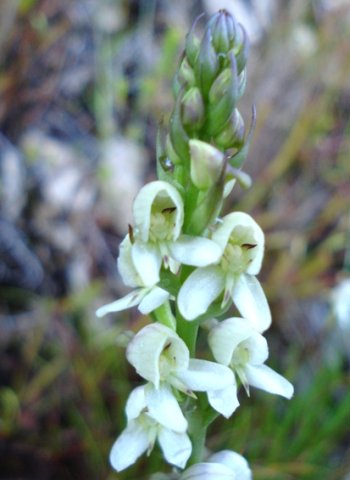Disa uncinata flower spike

Author: Ivan Lätti
Photographer: Judd Kirkel Welwitch
Disa uncinata is grouped with about 18 related species in the Disella section of the large Disa genus that comprises about 180 species. Disella is one of 18 sections, homogeneous groups of species put together on the basis of shared characteristics; yet still all disas. The Cape Floristic Region is home to species belonging to 17 of these sections; 100 Disa species are found in the fynbos.
Some of these sections used to be separate genera during certain phases in the history of orchid studies. Some Orchidaceae genera were discontinued in favour of concomitant additions to the Disa genus. Disella, confined to the Cape Floristic Region, comprises mostly species with densely flowered, slender and erect inflorescences. These plants mostly have narrow leaves up their stems right to the flowers. A rounded hood formed by the dorsal sepal covers much of the flower, a short spur attached at its back.
The D. uncinata flower spike in picture shows white flowers below the buds still to open at the tip of the spike. The buds are partly covered by narrow bracts, acutely pointed and incurving (Liltved and Johnson, 2012; Vlok and Schutte-Vlok, 2015; iNaturalist; iSpot).

